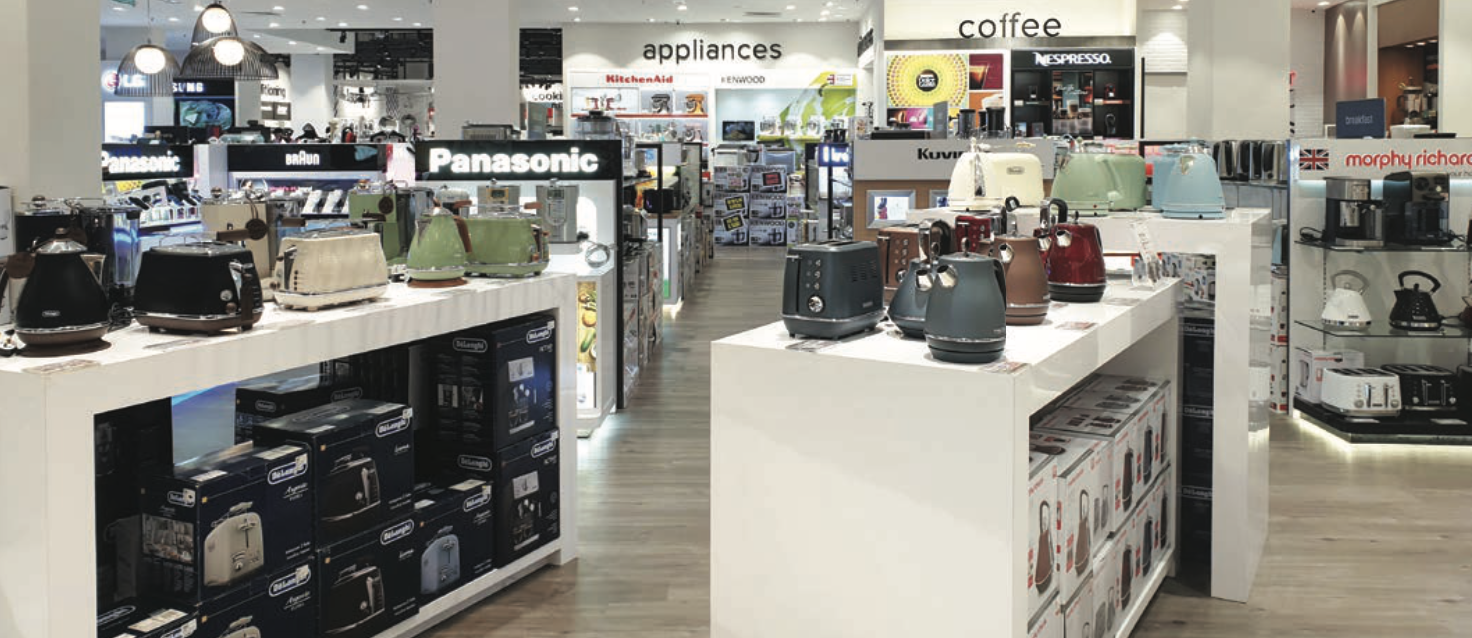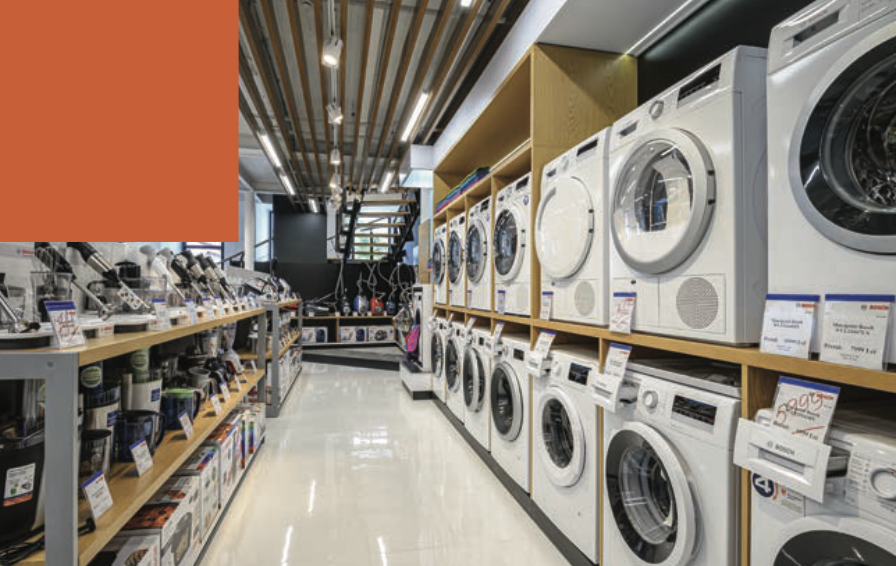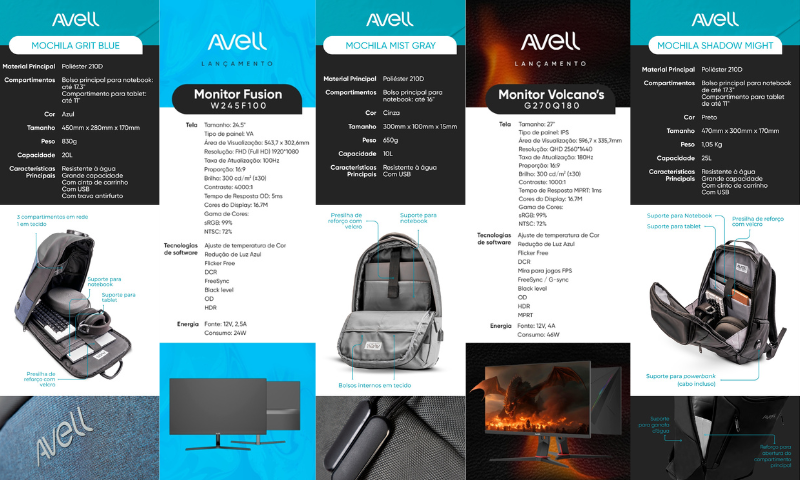
GOOD SALES PROSPECTS FOR WHITE GOODS AND AIR FRYERS
Fall in interest rates and increase in the number of jobs will stimulate sales in 2024.
by Leda Cavalcanti
The year 2024 looks promising, specifically in Brazil. There is a lot of pent-up demand, and the trend towards premiumization of products is irreversible, even if, sometimes, the consumer’s purchasing power prevents the deal from being completed. Therefore, different offers for target audiences must be segmented to stimulate consumption. “This year, it will be essential to communicate and activate consumers throughout the purchasing journey”, says, in this interview, Fernando Baialuna, director of retail and consultancy at GfK, a NIQ company.
Will 2024 be a good year for the consumer electronics sector?
Fernando Baialuna – Globally, there is optimism on the part of the industry and experts in the T&D (consumer electronics) sector that 2024 will be positive, after two years of market contraction in many countries. In Brazil, specifically, we are witnessing a continuous process of improving conditions to encourage consumption: the fall in interest rates and the increase in the number of positions occupied, for example, are two important aspects to stimulate sales.

Isn’t the indebted consumer afraid?
FB – Given the level of household debt, installment offers to finance the consumer and the offer of products with good value for money continue to be determining elements for expanding consumption, especially in classes C and D. Traditional categories such as TVs, computers and smartphones suffered more for specific reasons. It is no coincidence that these three categories present high levels of pent-up demand and are the big unknowns for 2024. The focus on communication and the targeted offer of premium and cost-effective premium products, as well as the increasing installment payments with the falling interest rates are decisive elements for the recovery of sales.
Will the premiumization trend continue in 2024?
FB – Without a doubt, it is a trend that will continue in 2024. It is an irreversible movement, but one that must be observed of consumers’ purchasing power in the short term. The desire for an upgrade is present, but the budget restricts it. In this context, different offers for different target consumers must be segmented to stimulate consumption among different audiences. Premium and cost-effective premium will meet different audiences, needs and conceptualizations of premium. It will be essential to assertively communicate and activate target audiences throughout the purchasing journey.
Which categories should have consumer preference?
FB – Some categories of SDA (small appliances) and MDA (white goods) will be favored by different circumstances. Practical examples of categories with good prospects such as MDA are air conditioners, washing machines and refrigerators, in addition to air fryers, which can grow through the need for exchange and adaptation. Air conditioning and refrigerators as a reflection of the heat in 2023, the hottest in history in the world; washing machines responding to pent-up demand after two years of moderate sales in Brazil. And air fryers, for adapting homes and formats for new generations, for example.
And the gamer segment?
FB – Other categories, such as gaming, also follow a growth trend with the expansion of the consumer base in this market, in addition to the premiumization effect, with the recent launch of new consoles and accessories.
Are sales expected to grow more in physical or online retail?
FB – Two years after the end of the pandemic, we observed the resumption of physical retail and a reorganization of forces between it and online. There was a recovery in sales in physical stores. I see a scenario that points to maintaining the balance of the current weight between the channels. It will be essential to reinforce media in the online channel, focusing on the consumer’s purchasing journey and its integration between physical and online, according to the category profile. We must change the vision from “channel segmentation” to “journey segmentation” for the most diverse products. And, always, considering the commercial characteristics of these journeys.
For the electronics sector, what are the biggest challenges of 2024?

FB – These are positive challenges, some historical and others recent. We still need, for example, to optimize investments in media through retailers as a communication platform, such as retail media. Segmenting target audiences, communicating and activating trade more assertively for different audiences is the answer to this necessary optimization. The digitalization of physical stores in new formats is a gradual change that continues to increase the integration of physical and online in different shopping journeys, rationalizing inventory costs by adjusting the product mix, for example. Inevitably, we will have a smaller format of stores, more digitalized and with the integration of experiences from the physical and digital environments.
Will artificial intelligence be important on this journey?
FB – Artificial intelligence permeates all these challenges, that is a fact. But what I want to highlight about AI, firstly, is the power to finally deliver customization at scale to personify communication and activation of target consumers. In summary, the integration of AI into CRM systems will expand the reach of more personalized interactions, bring greater operational efficiency, decision making and, ultimately, greater customer satisfaction and loyalty.

Do retail and industry need to be more united?
FB – My personal vision, which I have reiterated in recent years, is the need to strengthen the partnership between industry and retail in the consumer electronics sector, the JBP (joint business plan). With the sophistication of purchasing journeys and the end of channel segmentation, the means become more complex. For example, a more collaborative promotional calendar can bring gains in the chain and profitability of operations. A coordinated promotions calendar between retail and industry for events throughout the year, across different channels, can bring better sales results. This avoids offers that cannibalize between channels, such as D2C versus traditional retail channels.
What is your assessment of 2023?
FB – 2023 was a difficult year, with many efforts and optimizations to deliver results in a market that lost value in the average ticket, that is, entry-level and more accessible products prevailed over more sophisticated and premium ones. Given the results, it is worth highlighting the resumption of strength in regional retailers in the physical channel, not only as an example of resilience, but also of the importance of the vision of a more horizontal distribution if the mix and commercial policies are adjusted. Air fryers, consoles, air conditioning, fans and refrigerators were the highlights, serving rationalized and selective consumption for consumers with reduced purchasing power.
Source: Eletrolar News Ed. 159 – Especial Presidentes





